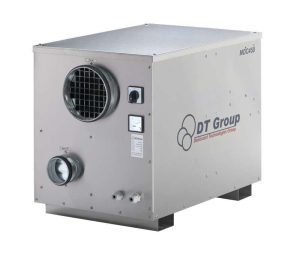Plate Heat Exchangers Not Meeting Performance?
The Plate Heat Exchanger is relatively new heat transfer technology and they perform very well due to the research and design that is behind them. Plate and Frames are inexpensive, highly efficient and unlike other types of heat transfer equipment, they are modifiable after any length of performance. Their design is able to be adjusted to fit the ideal size for the current process, and the current process is often not what it used to be.
Plate and Frame heat exchanger’s performance is generally calculated by the two easiest and sometimes only ways to check them: measuring the temperatures and pressures across the unit. The two go hand in hand, and poor measurements of one usually results in a poor measurement of the other. This does not mean the unit is reaching the end of its lifecycle, it just requires attention to address an issue it is having.
The most common problem is fouling of the plate’s surface over time. Small particles or films can congregate on the surface of the plates which forms an extra layer that hinders heat transfer as well as obstructs the flow through the channel, losing extra flow pressure. While fluids are not perfectly clean, in normal scenarios this issue should not arise very often- maybe once or twice a year. Frequent issues with having to clean debris or film from the plates could indicate poor quality fluids which is usually treatable with a chemical added to decrease the rate of fouling.
If maintenance to clean the plates seems to be required more frequently than it used to, it can be caused by a change in the overall process. Plate Heat Exchangers have many combinations of sizes to create an ideal unit for a given process. If you reduced or increased production but did not change the unit accordingly, you may be unsatisfied with its performance. While it may seem that a larger heat exchanger is a better one, it is not always true. If production reduced the flow-rate but the unit was kept the same size, the velocity in each channel will drop which promotes fouling by reduced shear stress along the walls. If production increased the flow-rate, then you will likely get unreasonable pressure drops through the now too-small unit.
The good news is any sizing issue is easily solved using a Plate and Frame, while another heat exchanger style would become obsolete if the process changed too far out of its design level. To open a unit, add or remove plates, and then close it up will only take the unit out of service for a couple of hours. This is also a great time to do a quick inspection of the existing plates and see if they require cleaning.
If your process changed too much, say the source or destination of one side of the exchanger changed and now the duty demand is too high, this cannot always be solved with the existing unit. When the approach temperatures of the hot/cold side get too close or the flow-rate is increased greatly, a larger unit may be required. Close approach temperature processes require taller plates for a longer thermal length, and high flow-rate processes need larger piping diameters.
It is not always clear as to what your heat exchanger setup should be as your processes change. You can refer to drawings provided with the unit or Virginia Heat Transfer for consultation on an appropriate unit design. Investing time to understand and maintain your Plate Heat Exchanger will allow you to benefit from its energy savings, rather than focusing on issues that arose because the unit was not maintained correctly.




